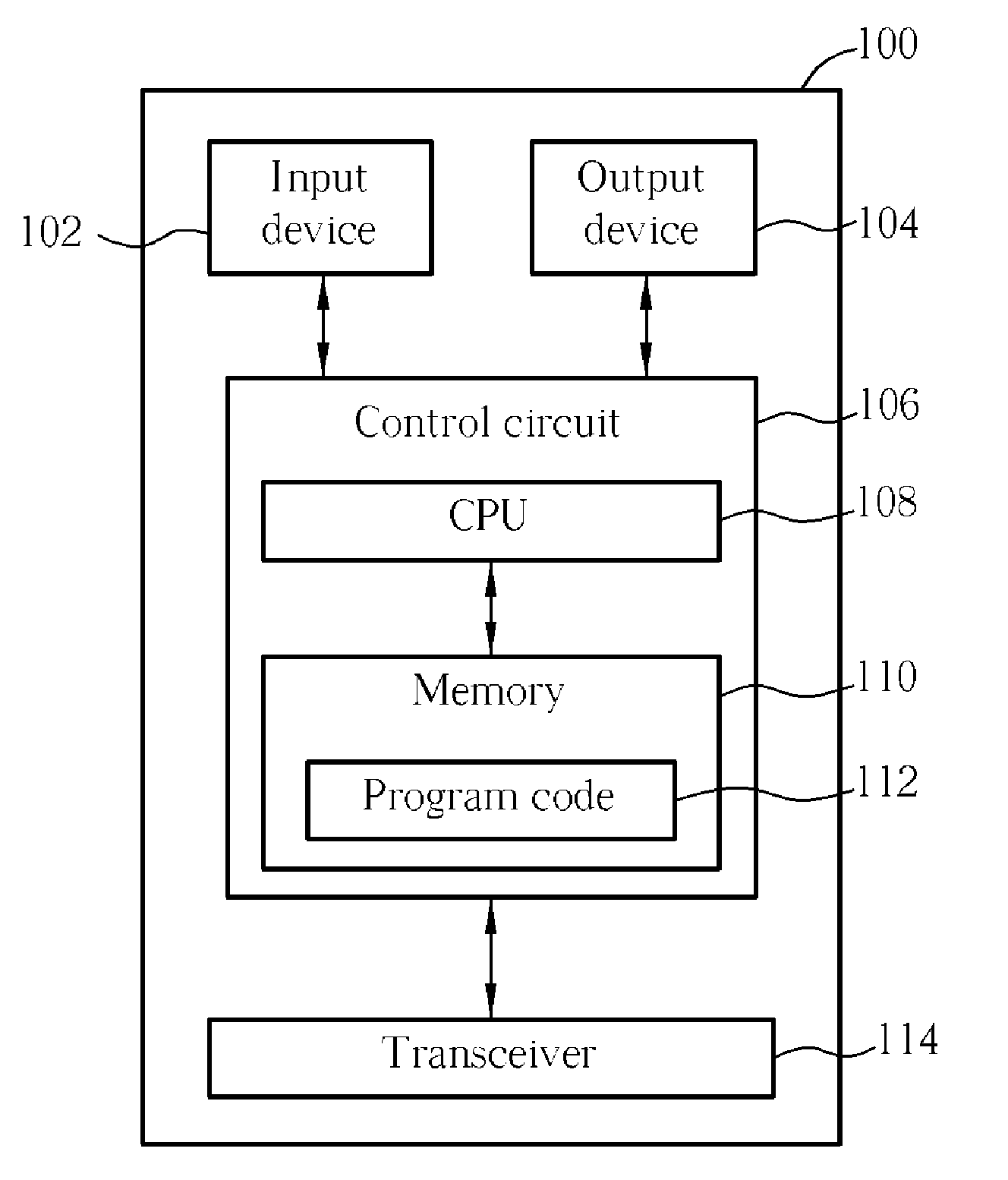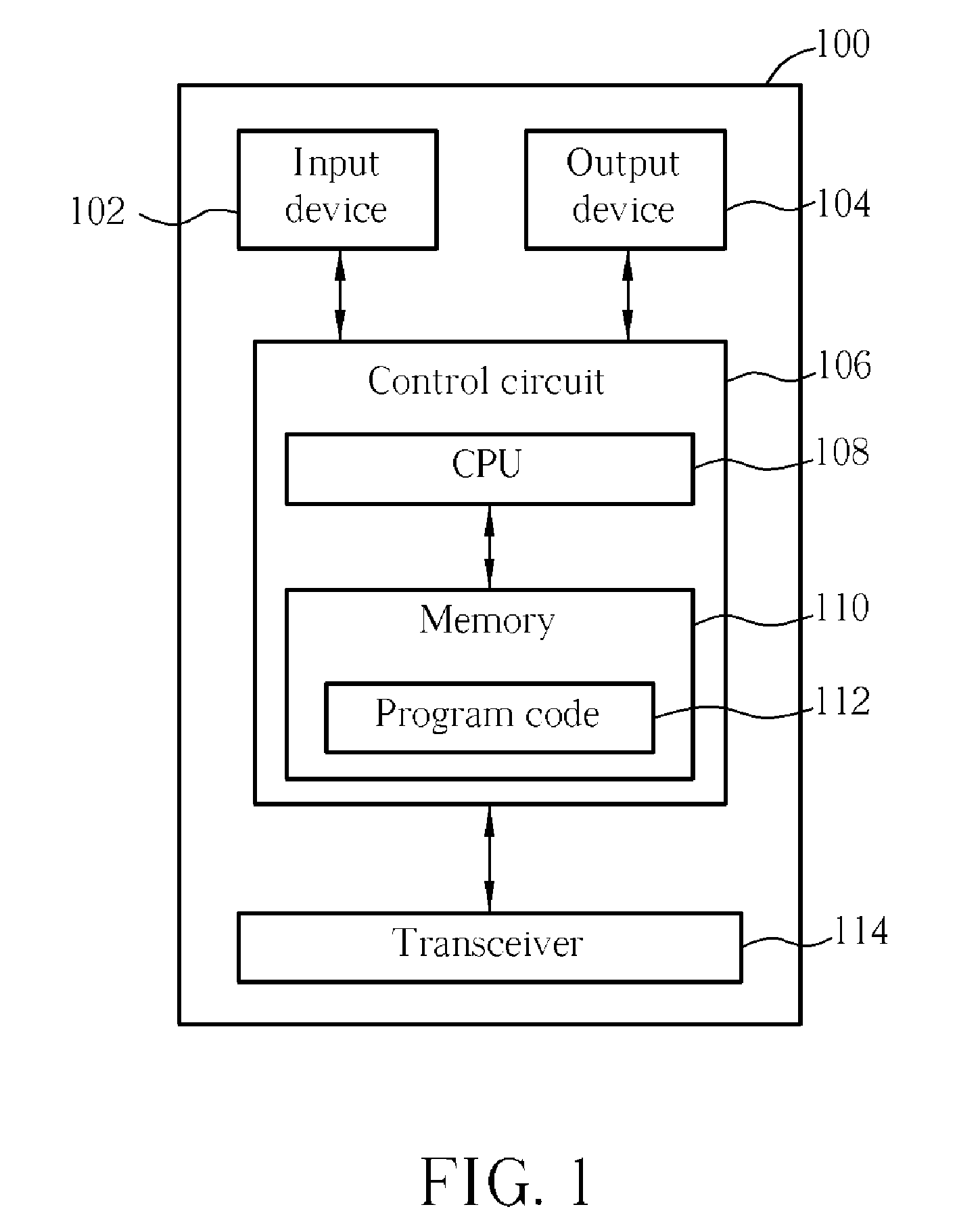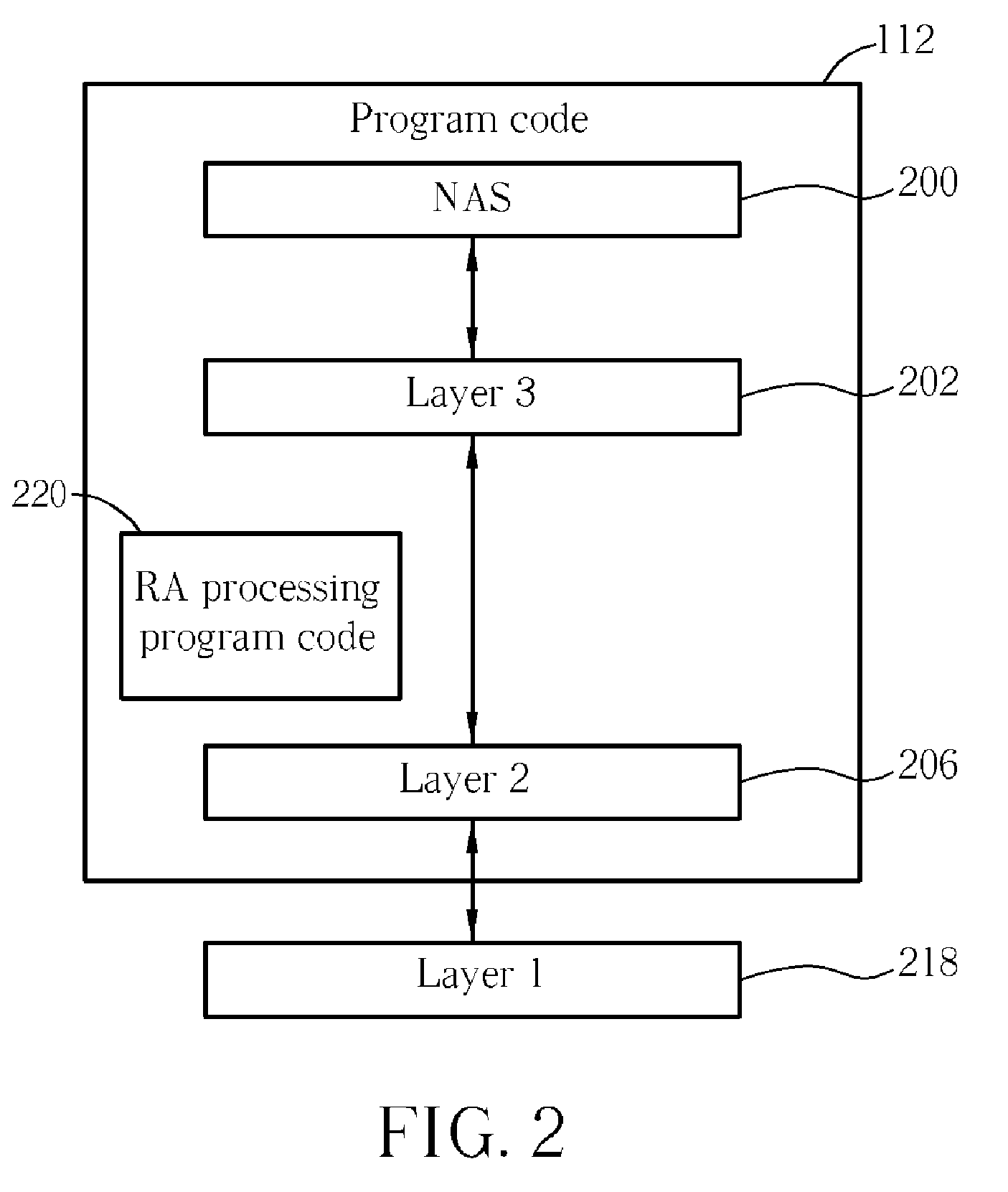Method and Apparatus for Handling Random Access Procedure in a Wireless Communications System
a random access and wireless communication technology, applied in the direction of automatic exchange, telephonic communication, electric devices, etc., can solve the problems of timing offset, inability to determine, and problems that may occur, and achieve accurate handling, accurate handling, and accurate handling
- Summary
- Abstract
- Description
- Claims
- Application Information
AI Technical Summary
Problems solved by technology
Method used
Image
Examples
Embodiment Construction
[0052]Please refer to FIG. 12, which illustrates a schematic diagram of a wireless communications system 1200. The wireless communications system 1200 is preferably an LTE system, and is briefly composed of a network and a plurality of UEs. In FIG. 12, the network and the UEs are simply utilized for illustrating the structure of the wireless communications system 1200. Practically, the network terminal may comprise a plurality of base stations (or Node B), radio network controllers and so on according to actual demands, and the UEs can be devices such as mobile phones, computer systems, etc.
[0053]Please refer to FIG. 1, which is a functional block diagram of a communications device 100. The communications device 100 can be used for implementing the network and the UE shown in FIG. 12. For the sake of brevity, FIG. 1 only shows an input device 102, an output device 104, a control circuit 106, a central processing unit (CPU) 108, a memory 110, a program code 112, and a transceiver 114...
PUM
 Login to View More
Login to View More Abstract
Description
Claims
Application Information
 Login to View More
Login to View More - R&D
- Intellectual Property
- Life Sciences
- Materials
- Tech Scout
- Unparalleled Data Quality
- Higher Quality Content
- 60% Fewer Hallucinations
Browse by: Latest US Patents, China's latest patents, Technical Efficacy Thesaurus, Application Domain, Technology Topic, Popular Technical Reports.
© 2025 PatSnap. All rights reserved.Legal|Privacy policy|Modern Slavery Act Transparency Statement|Sitemap|About US| Contact US: help@patsnap.com



